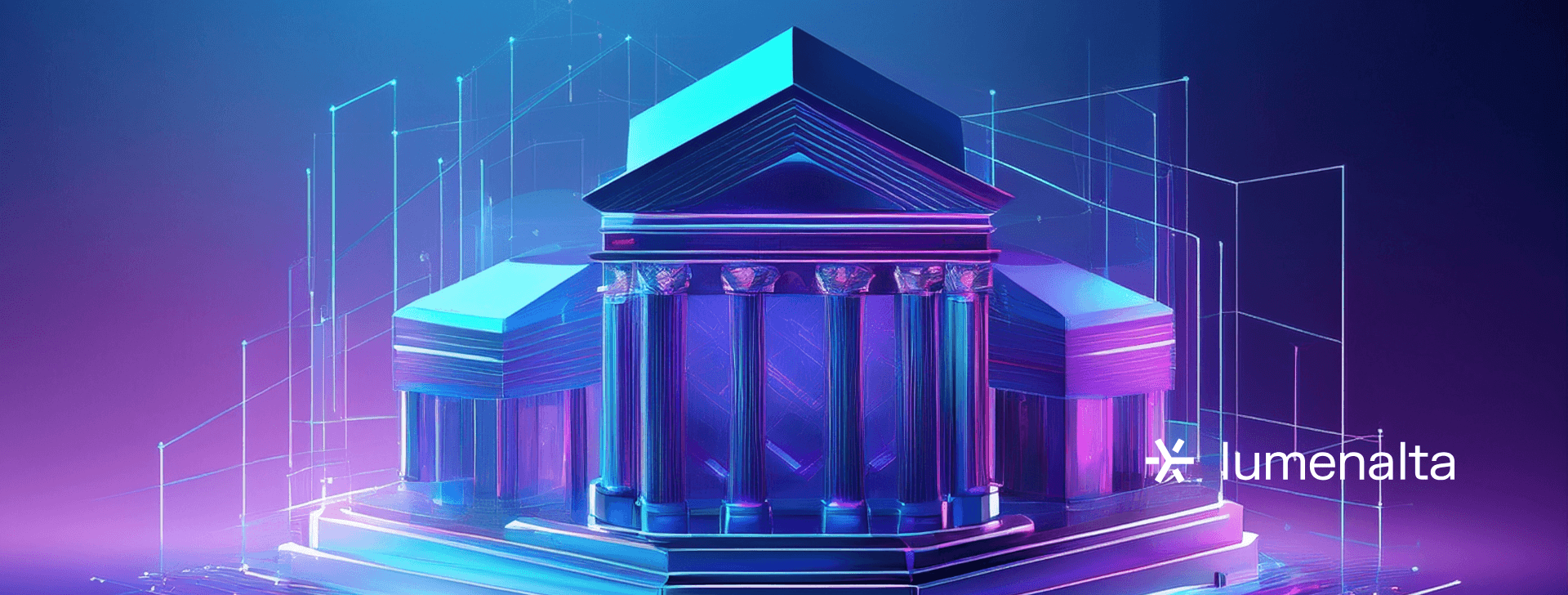

10 compliance automation trends in 2025
MAR. 4, 2025
4 Min Read
Compliance automation solutions are reshaping how regulated sectors address risk and oversight.
This approach allows leadership teams to align with new laws, reduce manual workloads, and improve consistency. It also supports agile processes that drive faster outcomes in an era of shifting regulatory guidelines. Modern platforms and workflows use advanced analytics to track and manage compliance tasks. The result is a more targeted strategy that identifies weak points before they escalate into fines or operational setbacks. This shift involves artificial intelligence, machine learning, and blockchain as leading contributors to more effective governance. Each addition signals a growing drive toward a holistic approach as compliance automation trends continue to expand.
key-takeaways
- 1. Modern compliance tools incorporate AI and machine learning to identify and address potential risks more quickly.
- 2. Blockchain integration offers data integrity and transparency by recording transactions in an unalterable ledger.
- 3. Real-time monitoring enables rapid notifications and corrective steps, reducing the impact of compliance incidents.
- 4. Customizable frameworks and employee training can scale compliance efforts across different departments efficiently.
- 5. Cloud-based deployments provide flexibility in updates, cost management, and rapid rollout for organizations of various sizes.
What is compliance automation?

Compliance automation refers to the application of technology that streamlines processes related to regulations, data protection, and oversight tasks. Software-powered checks and alerts reduce the burden of manual reviews, which can be time-intensive and prone to errors. Organizations benefit from automatic monitoring of documentation, workflows, and ongoing updates to regulations. This structure ensures that relevant rules are consistently addressed, lowering the chance of hefty penalties.
Teams often integrate compliance management systems into daily operations to centralize standards and protocols in one place. This approach organizes documentation, assigns responsibilities, and measures adherence through real-time dashboards. Additional integrations can sync data from cloud services, data privacy modules, and other key systems for broader visibility. The result is fewer surprises when audits occur and a better approach to corporate accountability.
“Compliance automation refers to the application of technology that streamlines processes related to regulations, data protection, and oversight tasks.”
Benefits of compliance automation
Organizations that invest in automated governance tools often experience a variety of concrete advantages. The biggest boost is typically in operational consistency, as checks run continuously instead of once in a while. These platforms also track minor policy infractions, keeping issues from growing out of control. Another benefit is stronger risk analysis, thanks to built-in metrics that map compliance tasks across multiple departments.
- Faster issue resolution: Monitoring rules and thresholds in an automated way alerts teams promptly, allowing faster resolutions to limit exposure.
- Lower operational costs: Reducing the need for constant manual checks frees staff to focus on more strategic tasks, which helps save budget.
- Improved data accuracy: Automated inputs remove the risk of typographical errors and outdated entries, leading to data sets that are more reliable for audits.
- Greater transparency: Audit logs and automated reporting provide a consistent trail of actions, so stakeholders have a clearer view of compliance activities.
- Enhanced alignment with regulations: Automated updates ensure the latest standards are always in place, preventing situations where guidelines are missed.
- Better operational speed: Tasks are processed in a fraction of the time needed for human-led reviews, contributing to faster time to value.
These advantages underscore the practicality of automated compliance. They reduce the burden on staff, limit the possibility of oversights, and keep documentation synchronized with standards. There is also a measurable impact on corporate accountability when data and policies are tracked in a unified framework. The following section will highlight 10 compliance automation trends in 2025, showing how these benefits connect to larger industry movements.
10 compliance automation trends to watch for in 2025
Looking ahead, professionals will find that the most significant progress in automated governance aligns with technology and policy changes. These 10 compliance automation trends in 2025 each highlight how organizations are rethinking their approach to oversight and accountability. The combined impact of artificial intelligence, blockchain, and cloud solutions signals a more proactive stance. Each trend offers unique insights and action items for leaders tasked with meeting strict guidelines.
1. Growth of artificial intelligence in compliance automation
Consider implementing AI algorithms to handle tasks such as document review and anomaly detection. This approach can assess large volumes of data in seconds, highlighting suspicious transactions or missing documents for immediate attention. It also supports predictive insights, where emerging risks are flagged based on patterns observed in previous data sets. The net effect is a sharper focus on pressing threats, with less time wasted on manual checks.
Leaders gain a measurable reduction in compliance errors when AI handles routine validations. Teams free up resources to develop stronger corporate governance, creating operational efficiency. This balanced system translates to fewer legal setbacks and better allocation of budgets. The takeaway is straightforward: a well-configured AI platform strengthens an organization’s compliance posture across various industries.
2. Integration of compliance automation with blockchain technology

Blockchain offers a decentralized ledger that logs transactions and data changes permanently and transparently. Tying compliance processes to this framework eliminates the need for third-party validation and builds trust among regulators. Each block is verified through cryptographic hashing, creating an unalterable chain of events. This structure lends itself to traceable compliance records across multiple jurisdictions.
The main difference between blockchain-based and traditional methods is the removal of manual reconciliation tasks. Organizations spend less time verifying records and more time addressing strategic goals. The practical benefit is immediate data integrity, helping stakeholders confirm that no hidden modifications exist. A shift to blockchain for compliance automation can shorten audit times while preserving accountability across departments.
3. Increased focus on real-time compliance monitoring
Real-time dashboards and automated alerts are becoming more common, giving executives instant feedback on potential policy breaches. This level of monitoring identifies vulnerabilities the moment they arise, well before they become operational disruptions. Automated notifications also prompt quicker interventions from compliance teams. A dynamic system like this streamlines governance, allowing for immediate course corrections.
Financial services, logistics, and similar fields gain a tangible edge through prompt oversight. Problems are contained swiftly, preventing larger-scale complications. Teams notice fewer compliance tickets overall, which can lower administrative costs. This approach positions real-time oversight as a central part of strategic planning rather than a last-minute fix.
4. Enhanced data privacy regulations impacting compliance tools
Regulatory bodies have strengthened laws around personal data, prompting a greater emphasis on secure storage and user consent. Automated solutions now include encryption features and policy-based access to sensitive information. Tools often integrate with identity management systems to confirm the right people are accessing the right data. Such emphasis on privacy ensures that organizations align with global mandates more effectively.
Compliance platforms that incorporate data privacy protocols demonstrate greater trust in external partners. Users also gain peace of mind, knowing their data is handled responsibly. This alignment reduces potential litigation and can boost an entity's reputation. The measurable outcome is safer data practices that limit risk while meeting the demands of modern privacy regulations.
5. Rising importance of machine learning in risk assessment
Machine learning algorithms evaluate trends across numerous data points to project where issues might arise. Sophisticated models adjust themselves based on past outcomes, leading to stronger predictive capabilities with each iteration. This process identifies risk factors that might be missed through traditional sampling or sporadic audits. As a result, risk teams can allocate their time and resources more efficiently.
Less uncertainty leads to fewer penalties or lost revenue. The improvement in forecasting also drives targeted compliance efforts. Departments collaborate more effectively when machine learning pinpoints specific hazards. The outcome is a dynamic risk profile that adapts alongside regulatory and operational shifts.
6. Evolution of compliance management systems (CMS)
Compliance management systems have moved from basic tracking tools to sophisticated platforms that align multiple business units. Modern solutions integrate with third-party tools for finance, HR, and cybersecurity, breaking data silos. This connectivity allows real-time scanning for compliance metrics across an organization’s entire workflow. The result is a singular source of truth for all governance activities.
Advanced CMS platforms lead to better executive-level oversight, as leaders can view the entire compliance pipeline from one dashboard. Tasks that once took weeks to reconcile are finalized much more quickly. Departments no longer scramble to find updated policy documents, since everything is consolidated. A fully integrated CMS provides measurable time savings and a consistent approach to regulation.
7. Expansion of cloud-based compliance automation solutions
Cloud providers offer scalable platforms that adapt based on demand peaks, so compliance checks do not stall during major audits. Subscription pricing often includes automatic updates, removing the hassle of patching on-premise systems. These hosted services also deliver advanced data encryption and robust backup options, essential for regulated sectors. Teams can deploy new rules without overhauling their entire IT stack, which speeds up adoption.
Regulated industries gain a more predictable cost structure by opting for cloud-based models. Scalability prevents disruptions when workloads fluctuate. Administrators find it simpler to roll out new features or expansions, as no extra hardware is required. This strategy builds long-term resilience, which is vital for meeting shifting legal requirements.
8. Increased demand for employee training in compliance automation

Compliance systems are only as effective as the people who interact with them. Staff need training sessions that explain software dashboards, interpret alerts, and clarify the logic behind automated workflows. Organizations that invest in skill-building initiatives experience fewer mishaps and more efficient identification of anomalies. This approach also builds a culture where compliance is embraced at every level.
Courses and workshops deliver measurable benefits, such as fewer repeated violations and better adherence to internal protocols. Senior stakeholders see a direct return on investment when skill sets match the sophistication of their compliance software. The process is not only about meeting legal obligations; it is about creating a stable operating structure. Employees become the first line of defense for governance, preventing gaps before they can escalate.
9. Collaboration tools for seamless compliance communication

Communication platforms designed for compliance allow teams to share documents, track updates, and create audit trails in a streamlined workflow. Integration with popular project management tools eliminates redundancies and ensures that each compliance task is assigned and followed up promptly. Notifications inform the right staff members of new duties or upcoming deadlines. As a result, cross-functional teams handle oversight tasks with less confusion.
Centralized chat features and shared libraries reduce guesswork and keep everyone aligned. This clear exchange of information often translates to fewer compliance gaps or missed steps. Any change in policy or regulation is easily disseminated to relevant staff, helping everyone remain current. When collaboration is baked into compliance systems, major improvements in speed and accuracy often follow.
10. Focus on customizable compliance frameworks
Tailored frameworks let each organization pick the specific features that match its regulatory challenges. Industries ranging from healthcare to manufacturing can incorporate specialized modules, making compliance more adaptive. Customization also reduces the learning curve, because teams can start with familiar processes and integrate only those elements that matter most. This approach guards against generic tools that leave major blind spots.
Time to value improves when staff do not struggle with unnecessary components. Organizations also benefit from a streamlined development cycle, as each compliance element is relevant to their sector. This customization fosters a sense of ownership over compliance obligations, adding clarity to daily operations. The result is a structured yet flexible framework that aligns perfectly with core objectives.
“Departments collaborate more effectively when machine learning pinpoints specific hazards.”
Implementing compliance automation

Decision-makers typically begin by evaluating existing processes for gaps and manual bottlenecks. A readiness assessment might involve checking data quality, current oversight responsibilities, and technology infrastructure. Strong collaboration between compliance, IT, and senior leadership ensures that the rollout is strategic and targeted. Tools and pilot programs can be introduced gradually so that staff adapt without major disruptions.
The next phase involves refining key metrics to measure effectiveness. These can include reduced turnaround times, cost savings, and a decline in compliance incidents. Staff feedback and audit results confirm if the automation tools are meeting organizational requirements or need further adjustments. Compliance automation is proving essential for organizations that handle strict oversight and constant policy revisions. The trends discussed here highlight how new technologies and strategic processes can strengthen operational resilience. There is also a clear focus on real-time checks, data privacy, and advanced analytics that shape how future governance is managed. Each aspect underscores a shift toward proactive and efficient standards.
AI-based risk assessment, blockchain-enabled tracking, and flexible compliance frameworks all point to a future where manual tasks are minimized. The ultimate objective is a robust system that addresses regulations, protects data, and builds trust among investors and clients alike. The strategies outlined can adapt to different sectors, from financial services to healthcare, each reaping measurable returns on investment. Organizations prioritizing these steps often find compliance automation a key driver for broader operational excellence.
Compliance initiatives can pave the way to stronger accountability and cost-effective operations. Streamlined risk oversight and automated checks empower organizations to concentrate on what matters: delivering results. At Lumenalta, we specialize in building tailored compliance solutions that align with your strategic objectives, ensuring you’re prepared to lead. Let us chart a brighter path.
table-of-contents
- What is compliance automation?
- Benefits of compliance automation
- 10 compliance automation trends to watch for in 2025
- 1. Growth of artificial intelligence in compliance automation
- 2. Integration of compliance automation with blockchain technology
- 3. Increased focus on real-time compliance monitoring
- 4. Enhanced data privacy regulations impacting compliance tools
- 5. Rising importance of machine learning in risk assessment
- 6. Evolution of compliance management systems (CMS)
- 7. Expansion of cloud-based compliance automation solutions
- 8. Increased demand for employee training in compliance automation
- 9. Collaboration tools for seamless compliance communication
- 10. Focus on customizable compliance frameworks
- Implementing compliance automation
- Common questions about compliance automation trends
Common questions about compliance automation trends
How do compliance automation trends affect smaller organizations?
What are some key features of a compliance management system?
Is AI necessary for effective compliance automation?
Which industries benefit the most from compliance automation?
How do compliance automation trends evolve over time?
Want to learn how compliance automation can bring more transparency and trust to your operations?








